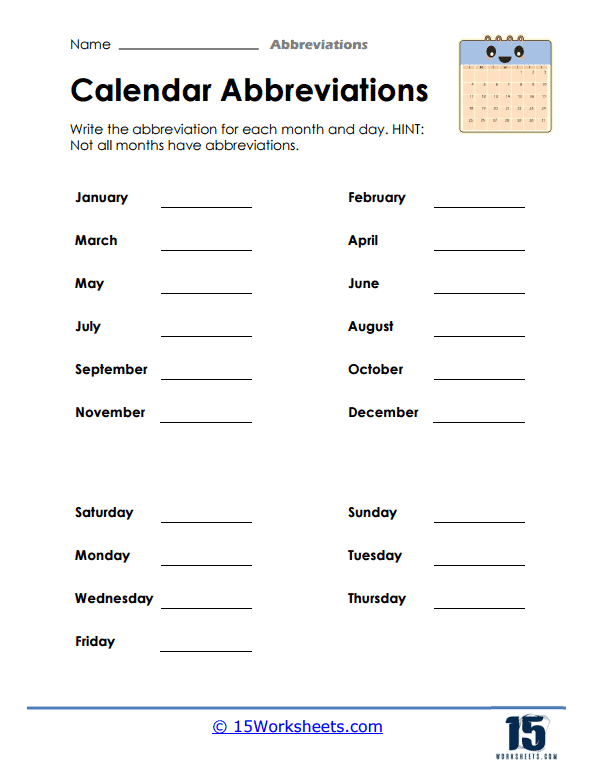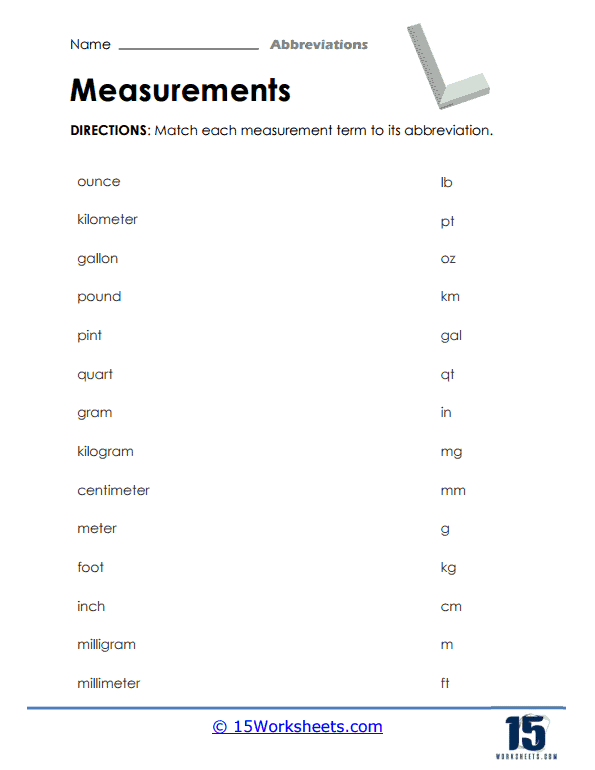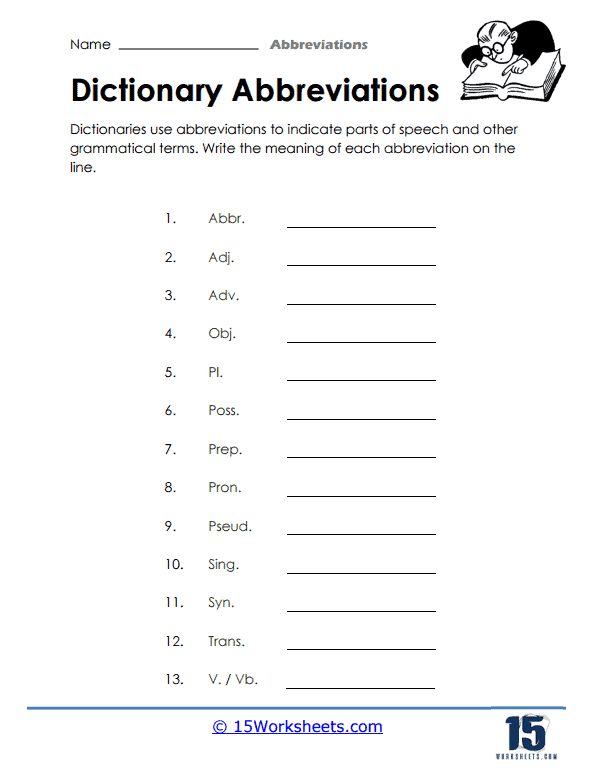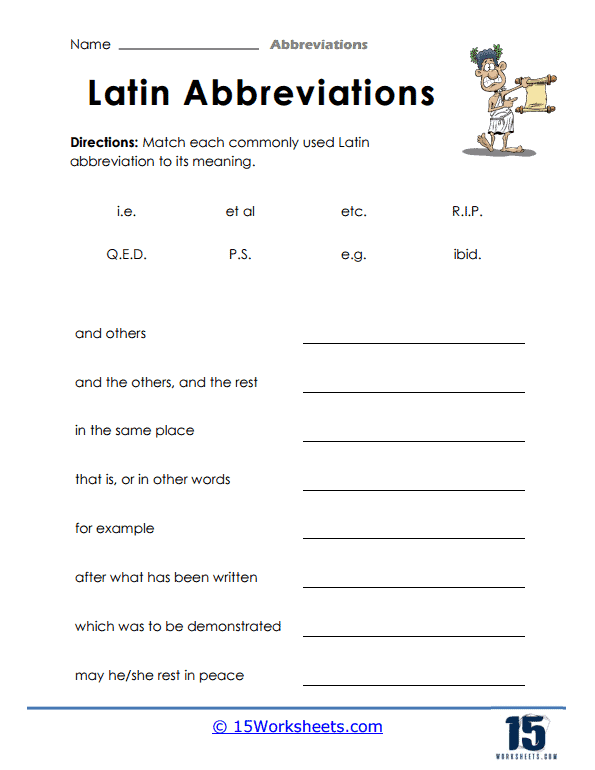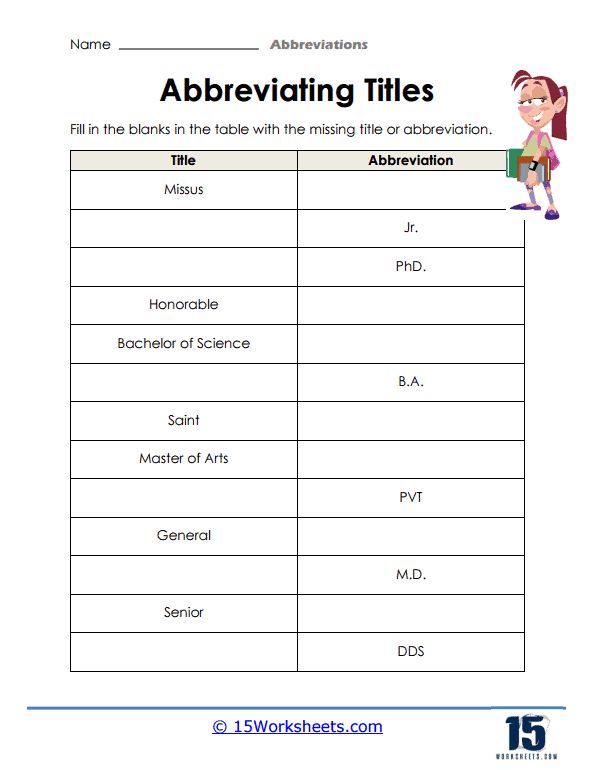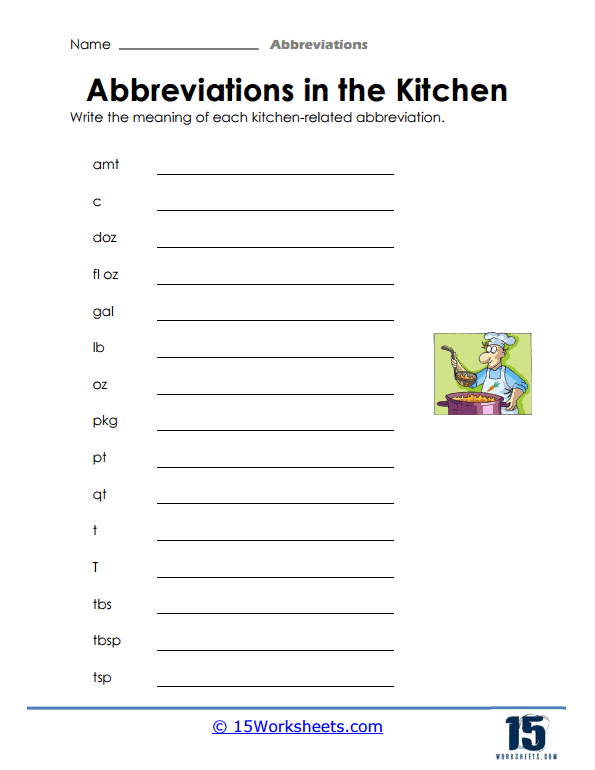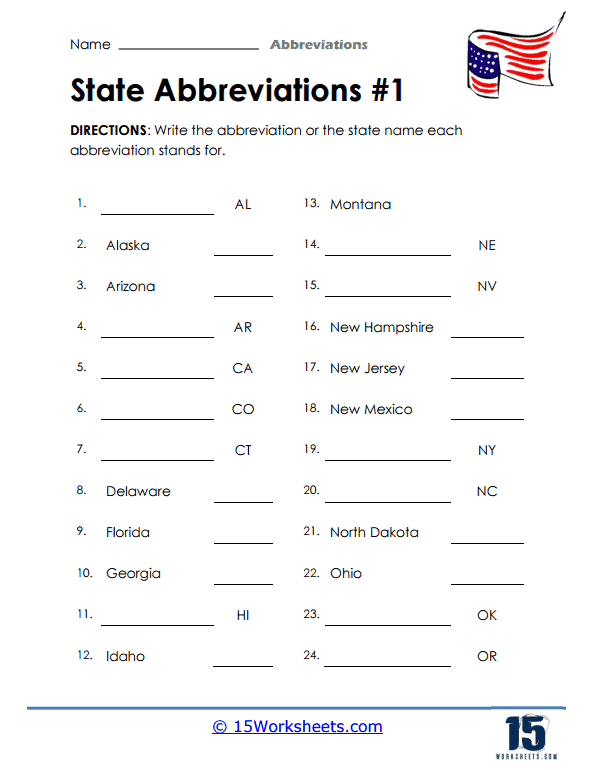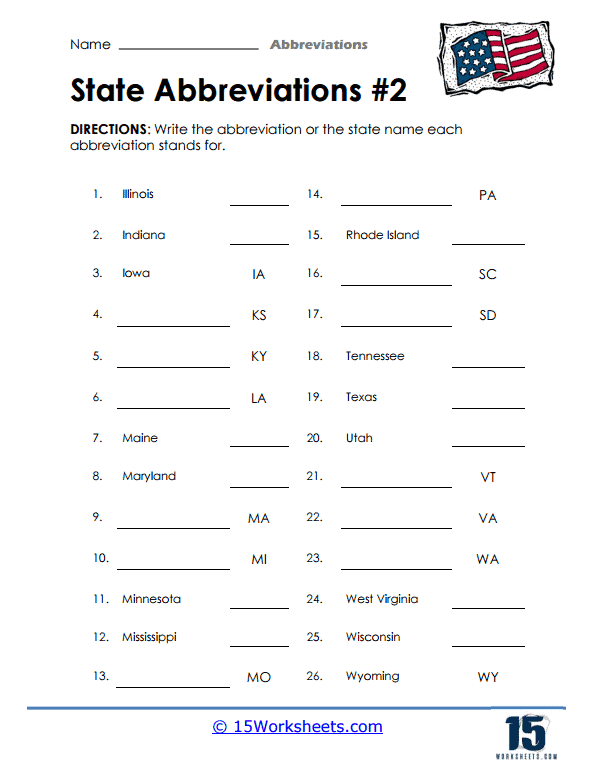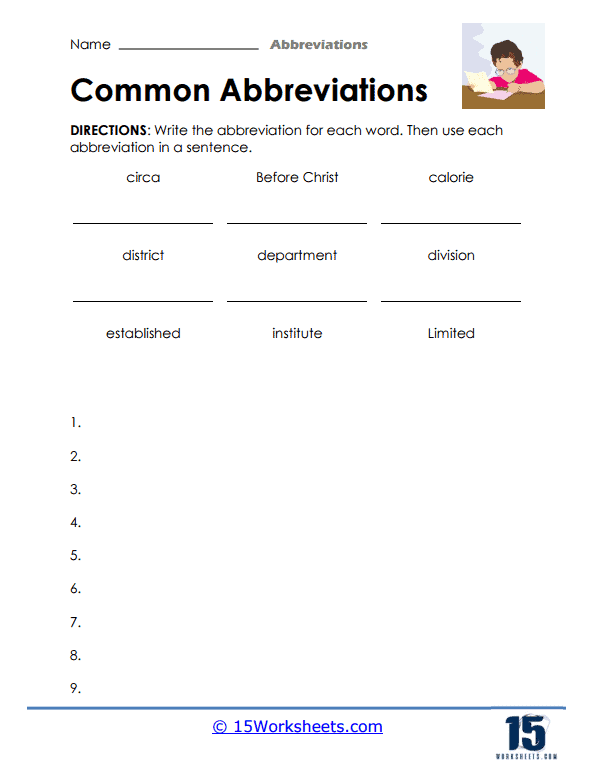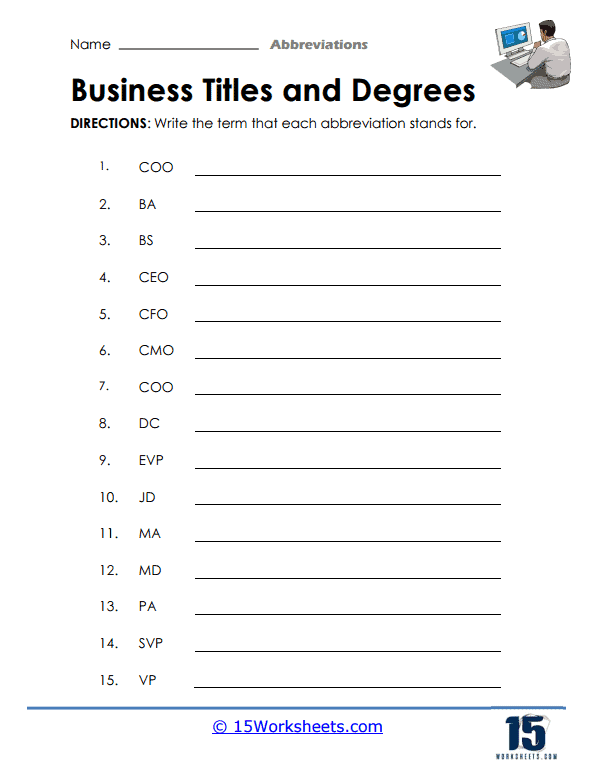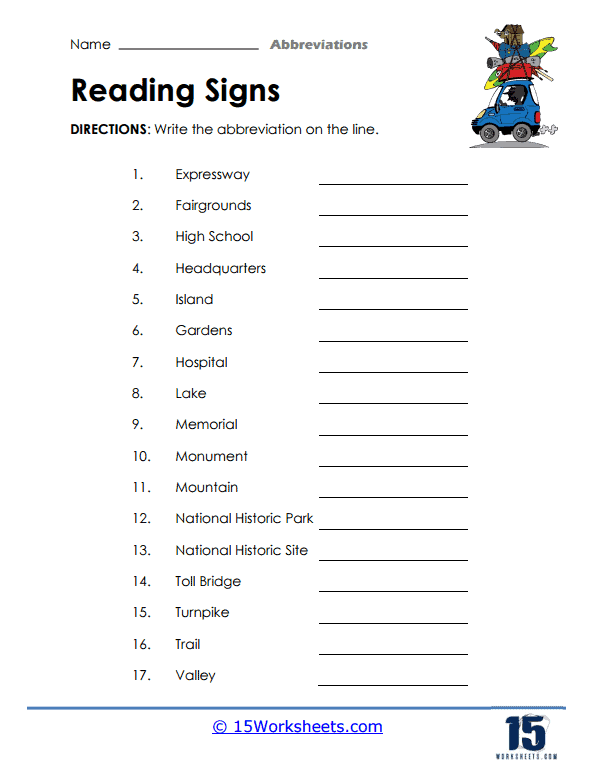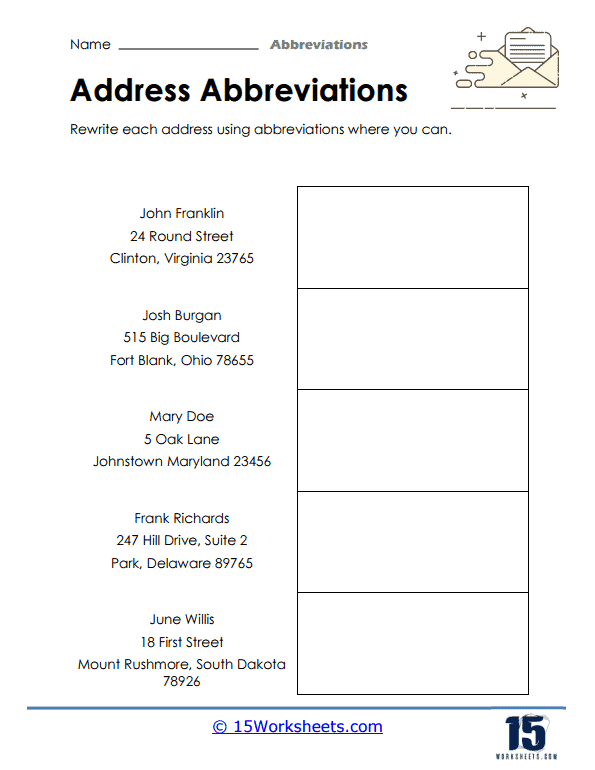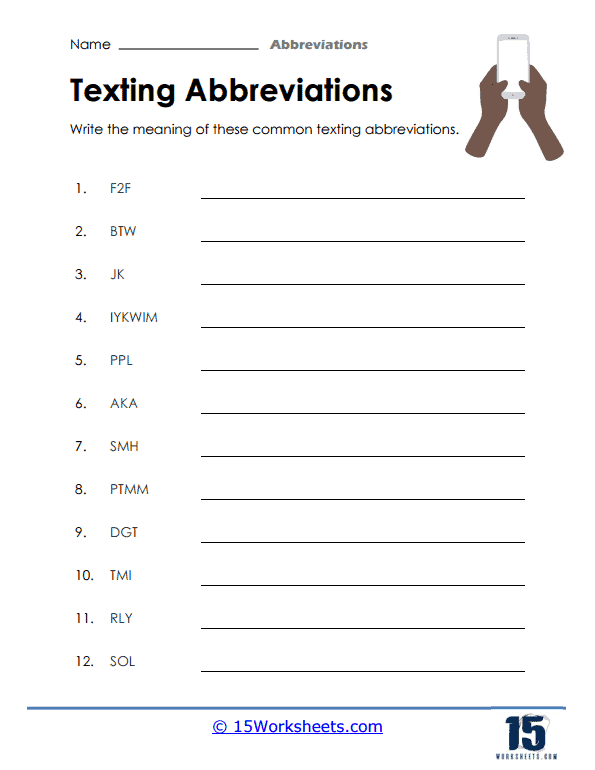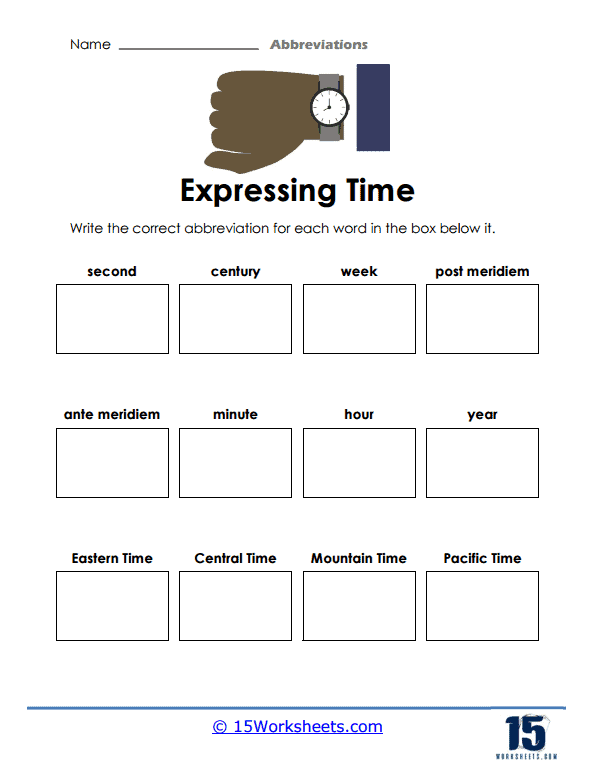Abbreviations Worksheets
About Our Abbreviation Worksheets
Most of our worksheets in this section require you to recognize a commonly used shortened form of a word or phrase. We will also ask you to match some more forms. As students are now typically accustomed to using abbreviations in their daily informal interactions, through these worksheets, teachers will build off of their students’ basic understanding on abbreviations and help them discover the many ways on how it can be beneficial in their learning journey.
After completing these abbreviation worksheets, students will be able to:
- Expand their vocabulary and become familiar with terms used in various subjects, industries, and everyday life;
- Understand abbreviations to decode texts more effectively, especially in subjects that heavily rely on technical terms, jargon, or acronyms;
- Save time when taking notes or writing essays, allowing them to focus on understanding the content and organizing their thoughts;
- Learn the structures and patterns of the language, as they identify the logic behind the formation of certain abbreviations, initialisms, and acronyms;
- And develop their cognitive skills as they decipher the meaning of unfamiliar abbreviations and practice creating their own.
Overall, incorporating abbreviation worksheets into students’ learning experiences can help them develop essential language and communication skills, foster critical thinking, and enhance their understanding of various subjects.
What Are Abbreviations and Why Do They Matter?
Abbreviations are shortened forms of words or phrases used for convenience, brevity, or to save space. They are created by omitting certain letters or using initial letters from a word or a group of words. Common forms of abbreviations include:
- Acronyms – formed from the initial letters of a phrase
- Initialisms – using the initial letters of each word in a phrase
- Contractions – shortening a word by removing certain letters
The history of abbreviations dates back to ancient civilizations, where they were used for various purposes:
- Ancient Rome – Abbreviations were widely used in inscriptions, legal documents, and literature. They were employed to save space on costly writing materials like parchment and to make the writing process quicker. For example, “SPQR” (Senatus Populusque Romanus) was an abbreviation for “The Senate and People of Rome.”
- Middle Ages – In medieval Europe, scribes used abbreviations to save time and space on manuscripts. For example, they used a line above a letter to indicate that one or more letters were omitted, such as “℅” for “contra” (against).
- Renaissance – With the invention of the printing press, abbreviations continued to be used, particularly in scientific and scholarly works. They were used for Latin phrases, units of measurement, and scholarly references.
- Modern Times – In the 20th and 21st centuries, abbreviations have become even more widespread due to the rise of technology and communication mediums like telegraph, SMS, and social media platforms. Acronyms and initialisms are now commonly used in organizations, technology, and daily communication. Examples include “NASA” (National Aeronautics and Space Administration), “FBI” (Federal Bureau of Investigation), and “LOL” (laughing out loud).
In conclusion, abbreviations have a long history, and several of them that originate as far as the Middle Ages are still widely used today, such as “etc.”(et cetera) and “e.g.” (exempli gratia).
The usage of abbreviations has evolved over time to accommodate changes in communication methods and the need for brevity and convenience. With the rise of mass communication and technology in the 19th and 20th centuries, they became even more prevalent. The telegraph, for example, required messages to be sent in a concise format, leading to the creation of numerous abbreviations like “ASAP” (as soon as possible) and “BTW” (by the way).
Today, abbreviations are widely used in written and digital communication, such as text messages, emails, and social media. They can help us make our thoughts more robust with the use of less characters. It is also important to distinguish the different forms of abbreviations and knowing which of them can be used in formal and informal settings.
These abbreviation worksheets will help gear up students in recognizing different forms of abbreviations and in using them appropriately and efficiently in casual day-to-day communication or in an academic or professional setting.

